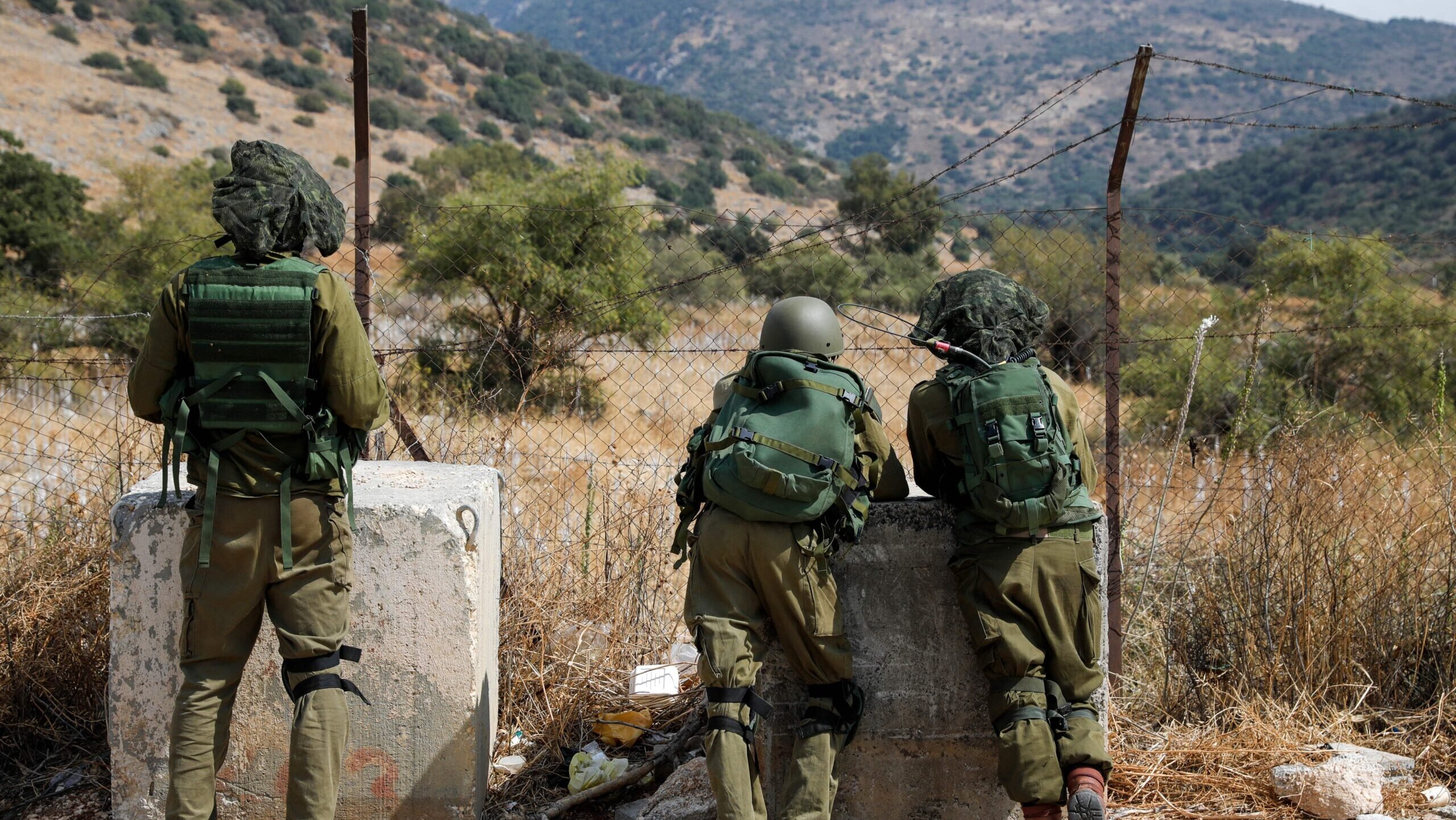World
Why a unit in Israel’s IDF purportedly used a medieval trebuchet against Hezbollah – Breaking Defense


Israeli soldiers take positions near the Israeli military base of Har Dov on Mount Hermon, a strategic and fortified outpost at the crossroads between Israel, Lebanon, and Syria, on October 10, 2023. (Photo by JALAA MAREY/AFP via Getty Images)
JERUSALEM — A short six-second video showing soldiers using what appeared to be a type of medieval trebuchet in northern Israel went viral online today, prompting questions about what the centuries-old contraption was meant to be doing while Israel is embroiled in large-scale combat operations in Gaza and trading strikes with Hezbollah at the Lebanese border.
In the video at least six soldiers can be seen standing around what appears to be a trebuchet, a type of catapult, as it launches a flaming ball over a concrete wall. The trebuchet appears to be about 12 feet tall and is on a small wheeled trailer. In the video Hebrew is heard from one of the soldiers, who seems to be in command. After one flaming ball is launched over the concrete barrier, he tells the soldiers to run and add another. One soldier holds a fire extinguisher, apparently in case of a misfire.
As odd as it looks, Israeli media confirmed that the video was real, reporting that the IDF had said that it was a local initiative of a unit and not a tool that has come into widespread use, according to Israel’s Kan public broadcaster. It was purportedly the work of reservists stationed near the border with Lebanon, and the Jerusalem Post reported it was filmed weeks ago. The IDF did not respond to Breaking Defense’s request for comment about the video.
A trebuchet is a relatively simple type of catapult that uses a long arm with a heavy weight on one end attached to an axle closer to the heavy weight. It was a popular siege weapon during the 12th to 16th centuries. The arm is pulled down and a projectile is put in a sling, such that when the arm is released the heavy weight rapidly pulls it up and it slings the projectile far into the distance. The one in the video appears to have been constructed from commercially available wood. It’s not clear what was used as a counterweight or how the flaming ball of fire was constructed.
As for its objective, Israeli media reported the IDF unit is most likely attempting to set fire to underbrush in southern Lebanon, which the IDF says Hezbollah uses as cover to get into position to launch attacks on northern Israel. (Breaking Defense recently reported on fears of Lebanese civilians in the southern part of their country, including in the aftermath of Israel’s purported use of white phosphorous, which also set fire to patches of land.)
RELATED: In South Lebanon, empty villages, ruined crops and fears of what comes next
It’s possible that the choice to use a low-tech weapon amid a war in which Israel is using new high-tech systems may be due to not wanting to fire projectiles such as mortars or artillery, that could harm people and cause Hezbollah to respond in-kind, as in previous violent episodes.
Israeli Channel 11 correspondent Itay Blumental noted that “the area at the Lebanese border is characterized by boulders and tangles, dense thorn vegetation, which poses a challenge to the IDF forces deployed in defense. It can be estimated that the burning of the thorns and vegetation across the border was intended to expose the area to facilitate the identification of terrorists who would try to reach the border and even to prepare for a ground maneuver into Lebanon.”
Israel’s Maariv outlet reported the trebuchet was the work of the Carmeli reserve brigade, which had been deployed to Gaza until earlier this month. Israel’s Ynet reported that some senior officers did not approve of the unusual tactic.
Though a curiosity, the video comes amid rising tensions between Israel and Hezbollah, even relative to the last few months. Overnight Hezbollah launched scores of missiles and rockets into Israel, in response to an Israeli strike that the IDF said killed a senior Hezbollah official.
Fire, it seems, is becoming a weapon whether its use is intended or not. Hezbollah attacks have started fires throughout northern Israel over the last weeks due to the extreme heat. It is likely that now both sides of the border have been burned due to the clashes.







:max_bytes(150000):strip_icc()/roundup-writereditor-loved-deals-tout-f5de51f85de145b2b1eb99cdb7b6cb84.jpg)


